Tyrannosaurus Rex, popularly known as T-Rex, is one of the most popular dinosaurs today thanks to more fossils being discovered and the many movie blockbusters made by Hollywood. If you are familiar with the “Jurassic Park” movies, where T-Rex has a recurring role, then you are familiar with the scenes where the T-Rex would shake the ground when entering the scene.
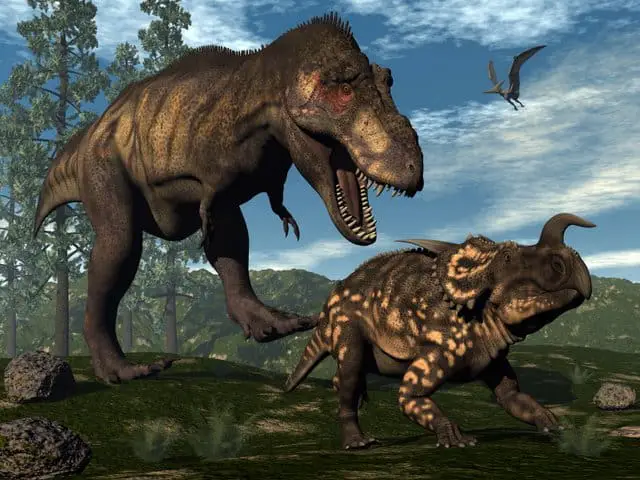
Would a T-Rex Shake The Ground?
So, would a T-Rex really shake the ground? Yes, it’s entirely possible that T-Rex could have made the ground tremble especially if running in groups or fighting. There may be reasons, however, why the T-Rex would not want to shake the ground, considering that this animal was a predator, and stealth would play an important role in hunting prey.
The fascination for the mighty T-Rex, a predator from the Cretaceous period, goes beyond its size and weight and dives deep into the field of Paleontology. This exploration leads to questions such as whether it could cause the Earth to quiver as it moved.
It is hypothesized that due to the T-Rex’s substantial mass, the impact of its footprints might generate vibrations akin to seismic waves. This occurrence is where sharp parallels are drawn to mild Earthquake activities, reflecting the power induced by the sheer force of the T-Rex’s strides.
Table of Contents
Physics elaborates on this extraordinary prospect, threading the principles of force, mass, and pressure together to explain potential seismic activity resulting from the T-Rex’s movement. This knowledge widens the scope of inquiry beyond the T-Rex, plunging into a comprehensive review of other giant dinosaurs from the Jurassic and Cretaceous periods, inciting fascinating discussions within the realm of paleontology.
Let’s go over this topic now and put some ideas to test. Stick around and keep on reading!
Weight Needed To Shake The Ground – Some T-Rex Measurements
Most of what we know about T-Rex today is formed by analyzing fossils and the impressions we get from Hollywood entertainment, so there are sure to be some misconceptions when comparing fossil facts and entertainment. Fossils still provide the closest evidence to the existence and nature of dinosaurs.
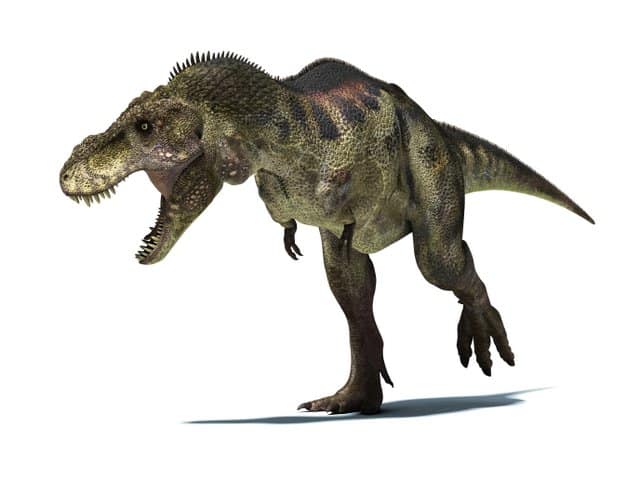
While it is evident that Hollywood movies may exaggerate the force of a T-Rex step as it hits the ground, it is possible that it would produce slight vibrations. The estimated weight of a T-rex is 7-9 tonnes, the weight is as heavy as a school bus. So, a single running T-Rex or a group of running T-Rexes could generate substantial ground vibrations, just as modern herds of mammals do when they run.
T. rex left footprints 1.55 feet (46 cm) long (although its feet were much longer, about 3.3 feet (1 m) long; T. rex, like other dinosaurs, walked on its toes). It had a stride length of up to 12 to 15 feet (3.7-4.6 m).
Even some large animals (rhinos, elephants and even running racehorses) cause the ground to tremble. However, elephants are known to be able to move very softly, even sneaking up on people.
Some T-rex species are only slightly larger than an elephant but its bone structure is far different being bipedal as opposed to quadrupedal and the elephant is known to use its trunk to help detect its surroundings enabling a much smoother ability to walk than some other quadrupeds.
The angle of a T-Rex’s legs would allow for much more force to be applied to the ground for forwarding motions and stopping or for smashing. However, given the smaller sized arms, it’s likely this large creature would use its legs as a primary force for attacking with much as a chicken will often use its legs to attack.
Shaking the Ground When Hunting Prey – Stealth is Needed, Not Loud Footsteps
As cool as it is that a T-Rex would shake the ground, there may be reasons why it makes sense that large predatory dinosaurs such as the T-Rex would want to step quietly despite their heavy weight. Hunting for prey is a key reason.
As seen in nature, many predators like lions, tigers or alligators, use stealth to sneak up on prey to kill them. It’s likely that T-Rex could benefit from using stealth on unsuspecting prey and not scaring them away with heavy steps.
Another reason is that stepping lightly requires more balance and this extra balance can help when fighting other dinosaurs or catching prey. As we will discuss below, the anatomy of the T-Rex creates a balance with the tail that could have possibly made the T-Rex run and move quickly, which is also important in hunting prey.
Size and Movement of a T-Rex
The size of the T-Rex is probably one of the factors that informed the perception that it could shake the ground. The largest and most complete T. rex skeleton ever found was nicknamed Sue, after its discoverer, paleontologist Sue Hendrickson.
Measurements of Sue suggest T-Rex was one of the largest carnivorous dinosaurs to ever live, Giganotosaurus and Carcharodontosaurus are slightly bigger. T-Rex comes in at 13 feet (4 meters) tall at the hips and 40 feet (12.3 m) long. A recent analysis of Sue, published in 2011 in the journal PLOS ONE, shows T-Rex weighed upto 9 tons which is about 8,160 kilograms.
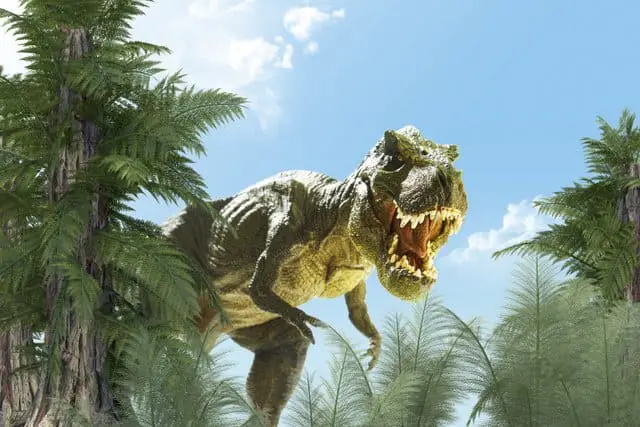
T-Rex had strong thighs and a powerful tail, which counterbalanced its large head (Sue’s skull is 5 feet, or 1.5 m, long) and allowed it to move quickly. Size and movement is a good way to assess if the T-Rex would shake the ground in different situations.
The 2011 study, which also modeled T-Rex’s muscle distribution and center of mass, suggests the giant could run 10 to 25 mph (17 to 40 km/h), as previous studies had estimated.
Its two-fingered forearms were small, making it unlikely that T-Rex could use them to kill or even use it to feed. However, it’s possible that T-Rex had such tiny arms because of its powerful bite.
T-Rex needed thick neck muscles to hold up its large skull and power its forceful bite. Neck and arms muscles compete for space in the shoulder, and it appears that the neck muscles edged out the arm muscles in T. rex’s case.
Moreover, long arms can be broken, are vulnerable to disease, and take energy to maintain, so having short arms may have been more suited to T-Rex on the long run, than having long arms.
The real work of dispensing with its prey was left to the dinosaur’s massive and thick skull. T-Rex had the strongest bite of any land animal to have ever lived. According to a 2012 study in the journal Biology Letters. The dinosaur’s bite could exert up to 12, 814 pounds-force (57,000 Newtons), which is roughly equivalent to the force of a medium-size elephant sitting down.
T-Rex had a mouth full of serrated teeth; the largest tooth of any carnivorous dinosaur ever found was 12 inches (30 centimeters) long, but not all of the dinosaur’s teeth served the same function, according to a 2012 study in the Canadian Journal of Earth Sciences.
Specifically, the dinosaur’s front teeth gripped and pulled; its side teeth tore flesh, and its back teeth diced chunks of meat and forced food into the throat. Importantly, T-Rex’s teeth were wide and somewhat dull (rather than being flat and daggerlike), allowing the teeth to withstand the forces exerted by struggling prey.
T-Rex may be big, but it was not the biggest dinosaur to have ever lived. Sauroposeidon is the biggest and the latest dinosaur discovered by scientists. Scientists think the dinosaur stood at 60 feet tall and weighed 60 tons! This is definitely large enough to shake the ground. Hence, scientists named it Sauroposeidon, which means “earthquake god lizard”.
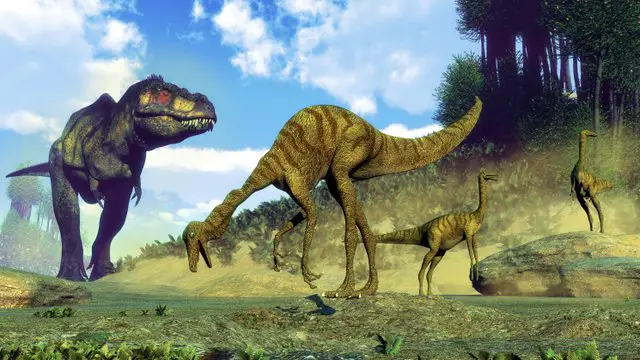
Scientists say the giant lizard was similar to a giraffe, except it was 30 times bigger! It had a very long neck, with bones up to 4 feet in length. Because the bones were so long, they were filled with tiny air sacs to make the neck lighter. Otherwise, the animal wouldn’t be able to lift its head to eat.
Scientists say the dinosaur probably ate leaves off of trees and lived in a wet area. It was one of the last dinosaurs to exist, and most likely did not have any predators because it was so huge.
❖ Read Now! The Ultimate Guide to Tyrannosaurus Rex
The main article in the series, it is packed with information all about the King of the Dinosaurs. it provides information about the first discovery, some of the latest fossil findings, and covers the anatomy of the dinosaur. Following this, it provides a look at the classification and phylogeny. The places, where T. Rex fossils have been found are described and a few of the key fossil skeletons are described. The master article also covers:
—Interesting facts you may not know about T. Rex
—Unanswered questions about the T. Rex
—Links to the Series Articles (17 in total!) which give deeper info on the dinosaur.
T-Rex Anatomy
Tyrannosaurus rex was a fierce predator that walked on two powerful legs. This meat-eater had a huge head with large, pointed, replaceable teeth and well-developed jaw muscles. It had tiny arms, each with two fingers. Each bird-like foot had three large toes, all equipped with claws (plus a little dewclaw on a tiny, vestigial fourth toe). T-Rex had a slim, stiff, pointed tail that provided balance and allowed quick turns while running.
Size
Tyrannosaurus Rex was up to 40 feet (12.4 m) long, about 15 to 20 feet (4.6 to 6 m) tall. The arms were only about 3 feet (1 m) long.
The enormous skull was about 5 feet (1.5 m) long. The eye sockets in the skull are 4 inches (10.2 cm) across; the eyeballs would have been about 3 inches (7.6 cm) in diameter.
Teeth and Jaws
T-Rex’s jaws were up to 4 feet (1.2m) long and had 50 to 60 thick, conical, bone-crunching teeth that ranged in size from very small to over 9 inches (23cm) long. Adults had a variety of sizes of teeth in their jaws at one time, as teeth were broken and new (smaller) ones grew in to replace them.
T. rex’s jaws were up to 4 feet (1.2 m) long and had 50 to 60 thick, conical, bone-crunching teeth that ranged in size from very small to over 9 inches (23 cm) long. Adults had a variety of sizes of teeth in their jaws at one time, as teeth were broken and new (smaller) ones grew in to replace them.
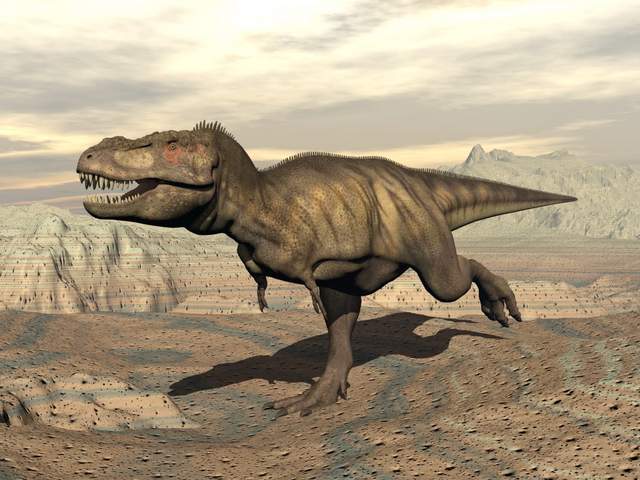
Tyrannosaurus rex had a wrap-around overbite; when T. rex closed its mouth, the upper parts of the lower jaw’s teeth fit inside the upper teeth.
Skin
Fossilized specimens of T. rex’s rough, scaly skin have been found. It was bumpy, like an alligator’s skin, and has been described as a “lightly pebbled skin.”
Habitat and Distribution
Tyrannosaurus rex probably lived in forests, where its prey (plant-eating dinosaurs) could find plenty of food. T. rex fossils have been found in western North America and Mongolia.
T-Rex Strengths During Hunting
- Raw Strength: In addition to being physically a tremendously strong dinosaur, T-Rex could lift over 5 tons with its powerful jaws. They could charge their own body weight against their enemies, ramming them like a freight train.
- Jaw Strength: Having the bite force of 8,000–13,000 pounds per square inch, the teeth and jaws of T-Rex are perfectly designed to crush armour and bone.
- Speed: Despite their giant size, T-Rex was considerably fast, able to reach speeds in excess of 10 to 25 mph (17 to 40 km/h) by using their long, powerful, and muscular legs.
- Agility: In addition to their relatively quick speed, T-Rex is quite agile for their size, able to make sharp turns within a couple of seconds.
- Senses: T-Rex relies strongly on its powerful sense of smell and hearing to find prey. They have also had powerful binocular eyesight, comparable to that of a bird of prey.
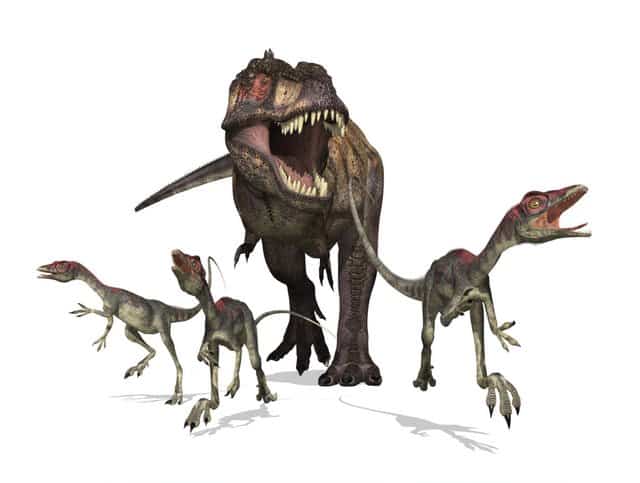
- Bacterial Bite: In addition to its powerful jaws and bone-crushing teeth, T-Rex, much like the Komodo dragon, was said to have a mouth full of diseases that could kill its victims.
- Intelligence: T-Rex is said to be as smart as a hawk, if not smarter, and to have the brain size of a gorilla’s brain. The cerebrum of T-Rex was larger than most dinosaurs, indicating that they were able to think through things more efficiently, identical to raptors.
- Hunting: T-Rex can hunt by themselves or in a family group and occasionally scavenge.
- Combat Abilities: Mostly, T-Rex used their powerful jaws to bite its enemy or prey. It can also use its long powerful legs to kick and their large tail to whip as well if the enemy is near the tail. T. rex’s head can be useful as a headbutt. They can even use their own body charge at its enemies, like a 7-ton battering ram.
- Durability and Stamina: A fully grown T-Rex is able to take many blows from other dinosaurs and still fight back because of its tough skin.
Conclusion
It is amazing to think that such a fierce predator like T-Rex existed. For all that we have discovered about it, many questions remain. We will never know for certain if, after each T-Rex footstep, the ground would shake. Based on the physics and anatomy of a T-Rex which we have covered in this article, there is a good chance we could watch the water vibrate in the cups just like in the Jurassic Park movie.

